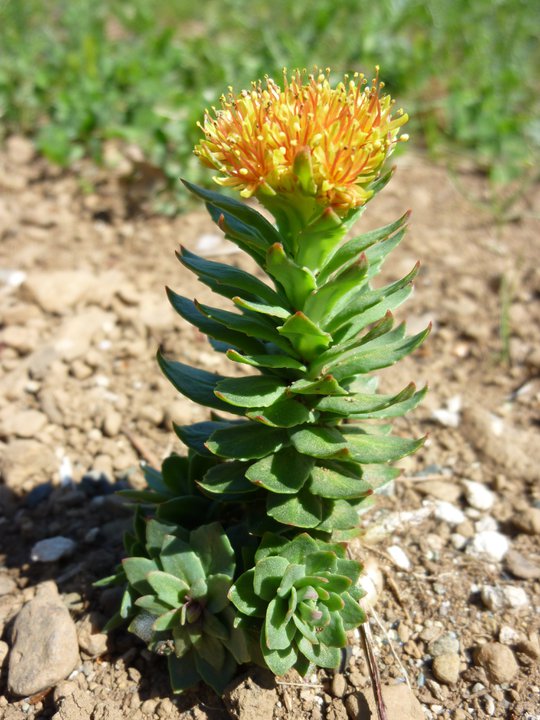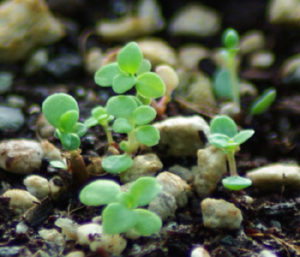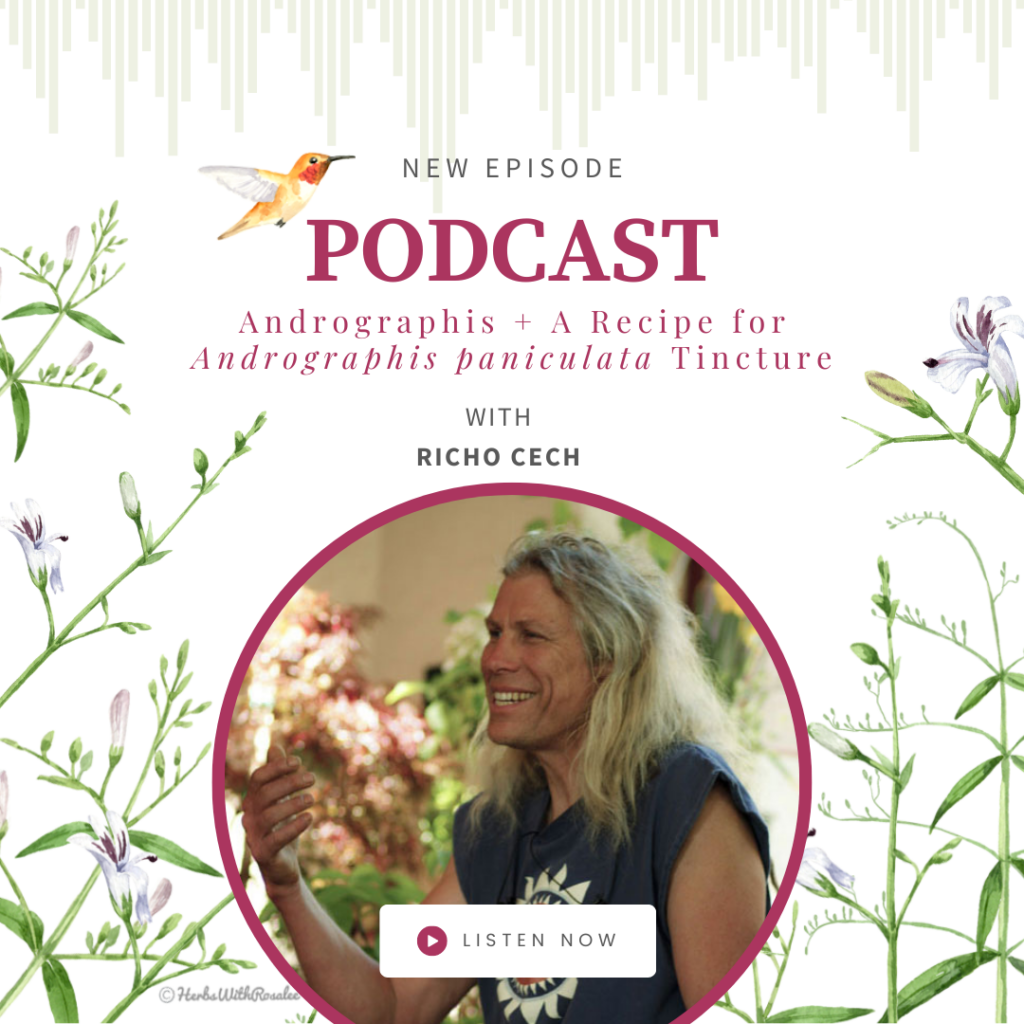
 Germination benefits greatly from cold conditioning/stratification, possibly ~ 6 weeks at 5 Celsius or colder, though typically seed is sown on moist sterilized potting soil (in plug trays – 72 cell trays are popular) during the winter and placed outside for two months or more, preferably with snow cover. Seeds can be covered lightly or pressed into the soil surface, but should not be buried too deeply or allowed to dry out completely. In Canada, rhodiola sprouts appear in late April or early May, after daytime temperatures increase, and can withstand significant frosts. Alternatively, strategies which utilize or mimic ethylene gas may also promote germination.
Germination benefits greatly from cold conditioning/stratification, possibly ~ 6 weeks at 5 Celsius or colder, though typically seed is sown on moist sterilized potting soil (in plug trays – 72 cell trays are popular) during the winter and placed outside for two months or more, preferably with snow cover. Seeds can be covered lightly or pressed into the soil surface, but should not be buried too deeply or allowed to dry out completely. In Canada, rhodiola sprouts appear in late April or early May, after daytime temperatures increase, and can withstand significant frosts. Alternatively, strategies which utilize or mimic ethylene gas may also promote germination.
Young rhodiola seedlings grow slowly, and do better in a location semi-sheltered from sun and wind. They grow slowly, suffering both when the soil remains saturated with moisture for extended periods and when the soil becomes very dry. Thus a balance between overwatering and drought conditions should be maintained. Mild fertilization may be beneficial, but is not required. After a month or two, when a stalk is sent up from the rosette of seed leaves, seedlings can be exposed to more sun to maximize growth. Seedlings can be transplanted in their first year, but can also be kept in plug trays for a year or two to minimize weeding in the field. Excellent transplant survival rates can be achieved any time the ground is not frozen, even with dormant (leafless) plugs in the fall. Eventually plant growth will suffer if seedlings are not planted out.
Ideal growing site components include full or almost full sun, good drainage during the spring runoff and some shelter from the wind. While the latter  is not imperative, it will help conserve soil moisture and enhance growth. R. rosea is very drought tolerant and does not require irrigation, however, it will benefit from regular watering – natural or otherwise. Field spacing depends on the chosen weed control system, especially if plastic mulch is used. One foot in-row spacing, with eight-inch between-row spacing of plants is an average for current trials, giving three to four rows of plants per (mulched) bed. Path spacing between beds will vary with the weeding regime, or a solid (pathless) planting may be preferred.
is not imperative, it will help conserve soil moisture and enhance growth. R. rosea is very drought tolerant and does not require irrigation, however, it will benefit from regular watering – natural or otherwise. Field spacing depends on the chosen weed control system, especially if plastic mulch is used. One foot in-row spacing, with eight-inch between-row spacing of plants is an average for current trials, giving three to four rows of plants per (mulched) bed. Path spacing between beds will vary with the weeding regime, or a solid (pathless) planting may be preferred.
Time to harvest can be as short as three growing seasons, when roots can attain 0.75% rosavin content or better, though four to five year’s growth will provide greater root biomass and a rosavin content of 1% or more. The roots tend to deteriorate from within as they age, harboring patches of necrotic tissue (or “heart-rot”) to which they will eventually succumb. The upshot is that – while there may be 75-year old plants in the wild – the maximum age of a commercial field may only be six or seven years. The dynamics of root attrition due to disease are not yet understood, and may differ with various cultivars and soil conditions. Initial indications are that fertilization is not beneficial under normal conditions.
R. rosea is an adaptable species, and as such appears to do well in a variety of soil types, from rocky gravel through heavy clay to silty, sandy and peaty loam soil types. The relationship between soil pH and rosavin levels is presently poorly understood, but may favor acidity – ? As a circumpolar species, Rhodiola does well at high latitudes, where its production of rosavins assists survival under harsh conditions. How it performs in warmer climates will be an interesting experiment.


Will this grow in zone 7?
Hi Sandra, Thanks for writing. Rhodiola is good in zones 1 to 7. Here’s a link to more info on growing rhodiola from seeds https://strictlymedicinalseeds.com/product/rhodiola-rhodiola-rosea-packet-of-100-seeds/
richo
Hi, will these grow in the pnw, if kept in a fast draining soil?
If grown in a portable planter, (to allow for shade on younger plants which can then be moved) what should the minimum depth be?
Thank you
hi, these will do fine in a shallow pot of 4 to 6 inches depth, they can be given standard succulent culture, the PNW is a good place to grow them. Like with every plant, you start growing it, and then you learn from it. richo
Thank you very much!
Are they also able to be started by leaf segments/cuttings?
not that I know of
In Michigan, how would potted Rhodiola plants do overwintered in an unheated greenhouse? Or should I plant them outside?
Thanks. Looking forward to their mental health benefits.
Hi Elizabeth. Either way, really. They can be kept in the unheated greenhouse in pots or planted outdoors. Cold winters are good for them. r
Hi Richo, I have some 3 year old rhodiola plants that I have grown from your seed (in Northern Wisconsin).They seem to be doing well, but a large portion of the root is sticking up above the ground ( maybe half?). Wondering if this is typical growth habit for rhodiola, or if it is caused by frost-heaving or erosion. If it’s not normal should I mound some soil around the roots, or mulch with something?
Hi Jenn, it is actually normal for these succulents to heave up and all of mine have golden-skinned aerial portions, more like a raised crown than a caudex. If you mulch with coarse, sharp sand, horticultural grit or chicken grit the plant will respond lovingly.
Hi Richo, do you sell Rhodiola rosea seeds by the gram?
Yes, please call (541) 846-6704.
I live in central Wisconsin (zone 4 or 4b)…will rhodiola grow here? We have medium soil where monarda, butterfly weed and other natives grow…
I live in alaska…..will this grow up here in Alaska outside??
Hello, Yes, the original seed source is from plants grown inside the arctic circle in Russia.